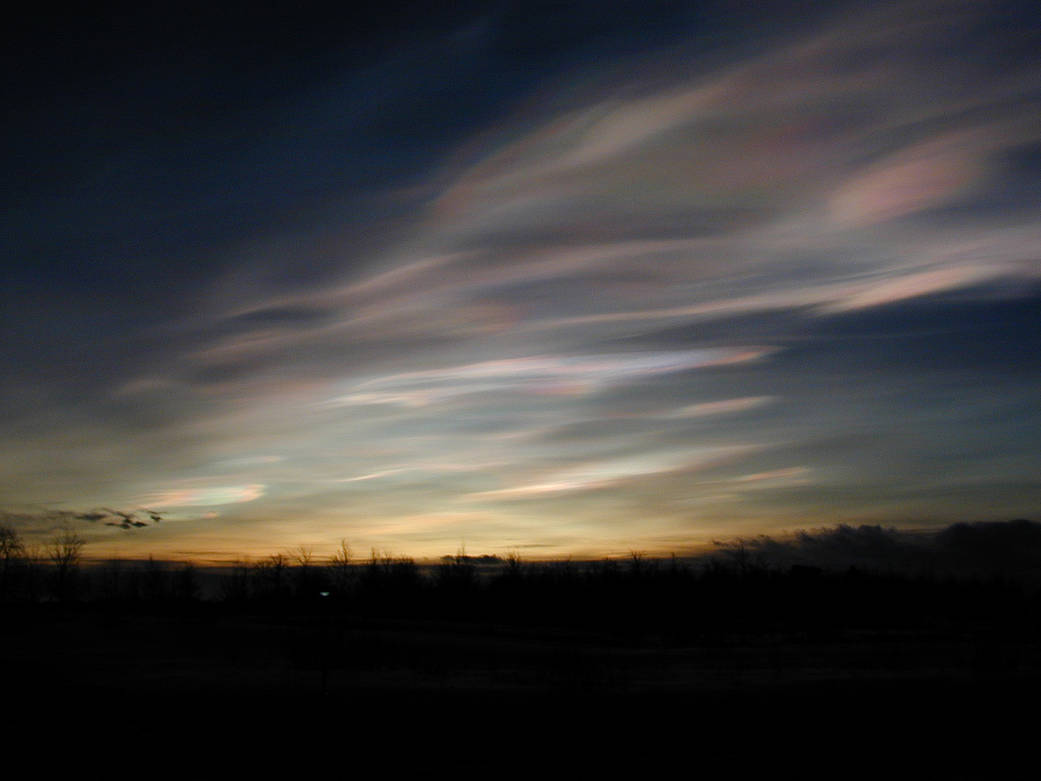Scientists recently discovered that polar stratospheric clouds, long known to play an important role in Antarctic ozone destruction, are occurring with increasing frequency in the Arctic. These high altitude clouds form only at very low temperatures help destroy ozone in two ways: They provide a surface which converts benign forms of chlorine into reactive, ozone-destroying forms, and they remove nitrogen compounds that moderate the destructive impact of chlorine. In recent years, the atmosphere above the Arctic has been colder than usual, and polar stratospheric clouds have lasted into the spring. As a result, ozone levels have been decreasing.
This photograph shows polar stratospheric clouds lit from below near Kiruna, Sweden.Image credit: NASA/Lamont Poole
1 min read
























